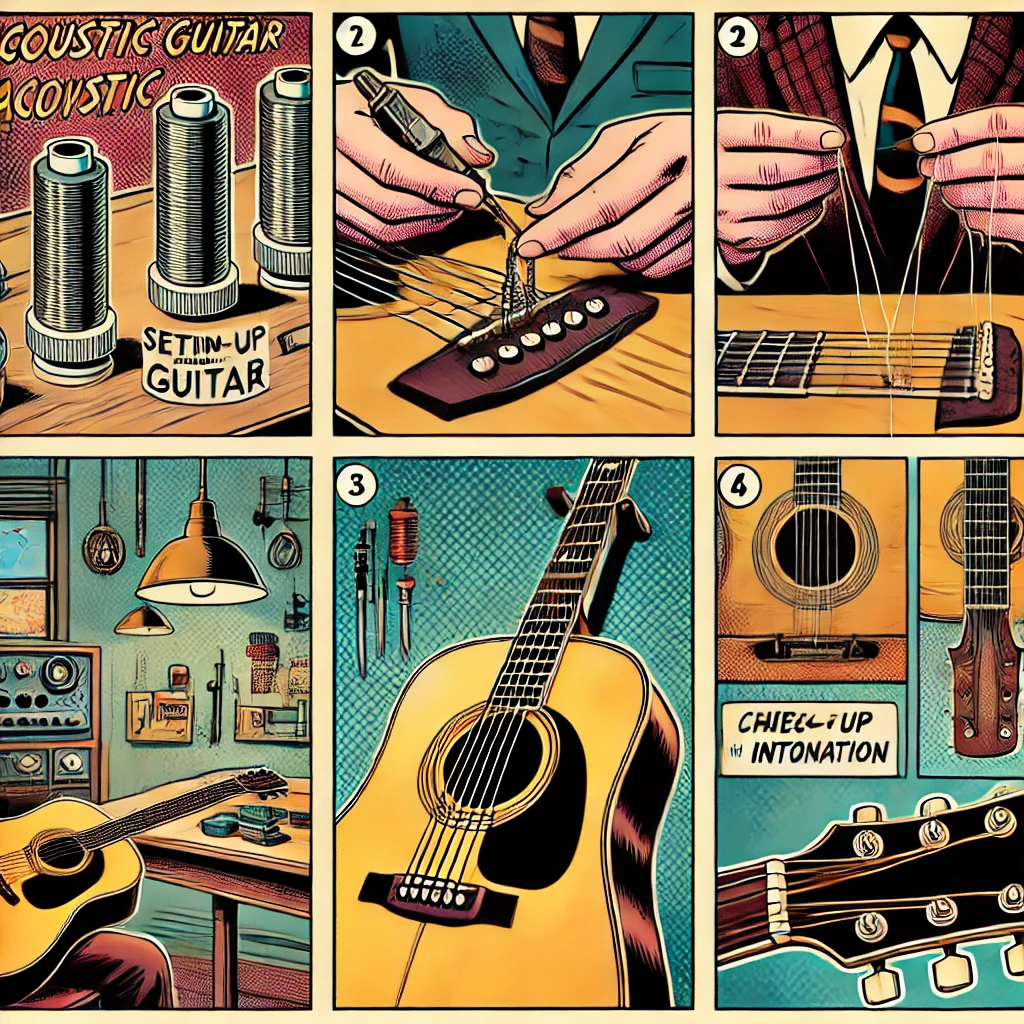How to Set Up and Intonate an Acoustic Guitar
Setting up and intonating an acoustic guitar properly is crucial for ensuring that the instrument plays in tune across the entire fretboard. While intonation adjustments on acoustic guitars can be more challenging than on electric guitars due to their fixed bridge systems, there are several steps you can take to improve intonation and overall playability. Here’s a basic guide on how to set up and intonate an acoustic guitar:
1. Check the Guitar’s Neck Relief
– Neck relief refers to the slight curvature of the guitar’s neck, which is essential for optimal playability and intonation.
– To check neck relief, press down the low E string at the first fret and the fret where the neck meets the body (around the 14th to 17th frets). Use a capo to make this easier if necessary.
– Look for a small gap (about the thickness of a business card) between the bottom of the string and the top of the 7th or 8th fret. If the gap is too large or if the string is touching the frets, you’ll need to adjust the truss rod.
2. Adjust the Truss Rod
– If the neck is too bowed (too much relief), tighten the truss rod by turning it clockwise. If the neck is too straight or has a back bow, loosen the truss rod by turning it counterclockwise.
– Make adjustments in small increments (a quarter turn at a time), and recheck the neck relief after each adjustment.
3. Check and Adjust String Action
– String action is the height of the strings above the fretboard. High action can make the guitar harder to play and negatively affect intonation.
– Measure the action at the 12th fret. A common action height for acoustic guitars is around 2.5mm for the low E string and 2mm for the high E string, but personal preference plays a role.
– To adjust action, you may need to sand down the bottom of the saddle (for lower action) or add shims underneath it (for higher action). Be careful and make small adjustments.
4. Check Nut Height
– The height of the strings at the nut can also affect intonation. If the strings are too high at the nut, they will play sharp at lower frets.
– To check, press down a string at the 3rd fret and look at the gap between the string and the 1st fret. There should be a very small gap.
– Adjusting nut height is tricky and might be best left to a professional, as it involves filing the nut slots deeper.
5. Intonation Check
– Since acoustic guitars typically have a fixed bridge, adjusting intonation directly isn’t as straightforward as with electric guitars.
– To check intonation, play a harmonic at the 12th fret and then play the same note fretted at the 12th fret. These should be in tune with each other. If they’re not, it’s a sign of intonation issues.
– For slight intonation issues, ensuring the saddle is properly seated and the top of the saddle is correctly contoured to match the radius of the fretboard can help.
– In some cases, a new, compensated saddle that is specifically cut to improve intonation for your guitar may be necessary.
Conclusion
Setting up and intonating an acoustic guitar involves careful adjustments to the neck relief, string action, nut height, and potentially the saddle. While some steps can be done at home with the right tools and caution, certain adjustments, especially those involving the nut and saddle, may require the expertise of a professional luthier to avoid damaging the instrument. A well-set-up guitar not only plays and sounds better but also inspires more playing and practice.
